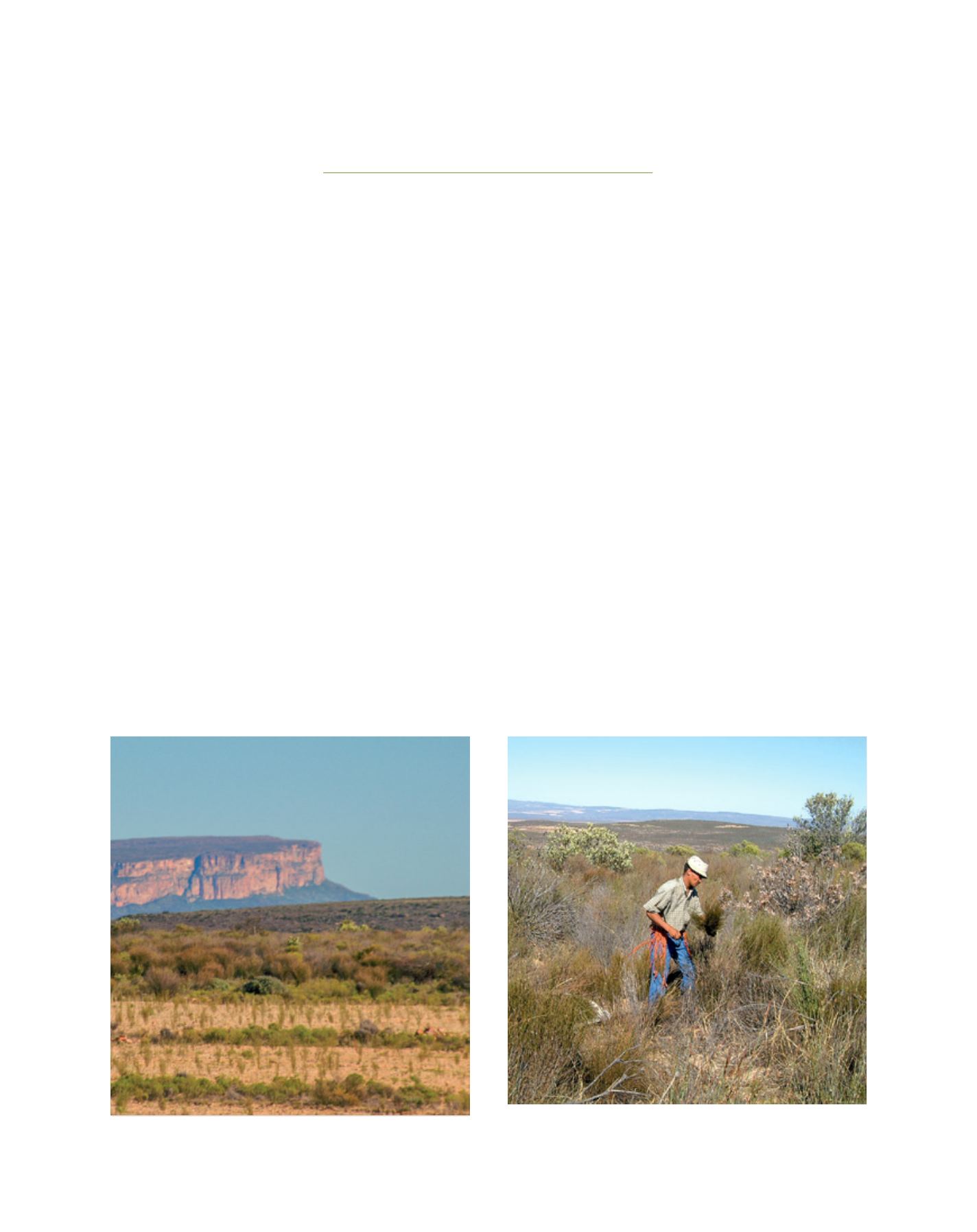

[
] 106
Ancient soils reborn
Noel Oettlé, Environmental Monitoring Group, South Africa
T
he Bokkeveld Plateau is a remarkable heritage
site that for many millennia was home to the San
peoples of southern Africa, who left their timeless
art on the walls of caves in the sandstone cliffs of the
area. At the meeting point of the Fynbos and Succulent
Karoo biomes, the vegetation and the soils of the plateau
are remarkably diverse, reflecting evolutionary processes
that are still ongoing. Some of the soils are sands first
deposited in a rift valley that existed here over 300 million
years ago, transformed into monumental rock formations
over time. Others are shales deposited in ancient seas and
by Gondwanan ice sheets.
The diverse soils of the Bokkeveld support the equally
diverse crops of the communities that live here today: wheat
on the loam soils derived from the shales, and rye, oats and
rooibos tea on the infertile sandy soils amidst the sandstone
massifs. Retaining a tenacious grip on the land in the more
marginal parts of the area, where average rainfall may be
as low as 150 mm per annum, a community of small-scale
farmers cultivates rooibos (
Aspalathus linearis
) and also
harvests the wild-growing plant to produce a remarkable
tea, exported to many parts of the world.
Rooibos was first used by the first people of South Africa,
the KhoiSan. In the twentieth century its remarkable health-
giving properties led to its becoming more widely known, both
within and beyond the borders of South Africa. Equipped with
a combination of strategies, rooibos is well adapted to the hot,
dry summers of the area: its tap roots can reach groundwater
metres deep in the sandy soils, nodules on the roots provide
nitrogen and cluster roots use the water from far down in the
soil profile to utilize plant nutrients in the topsoil. These abili-
ties enable rooibos to thrive in conditions that do not favour
any other commercial agricultural crop. While rooibos prom-
ised a way out of poverty for the small-scale farmers of the
Bokkeveld, discrimination and isolation meant that they were
not able to benefit from their knowledge of the plant.
Following the end of Apartheid in 1994, the small-scale
farmers of the Bokkeveld were able to access global markets
for organic and Fairtrade products and thereby improve their
livelihoods. In 2001 they formed the Heiveld Cooperative
to process and market their rooibos products. The Heiveld
has been certified organic since 2001, and in 2004 became
the first rooibos producer in the world to become Fairtrade
certified, illustrating the determination of its members to
create a more equitable society.
Image: N Oettlé
The Bokkeveld landscape, with cultivated rooibos tea in the foreground
Wild rooibos plants are only harvested every second year, and the biodiversity
of the environment is maintained
Image: N Oettlé
L
iving
L
and
















